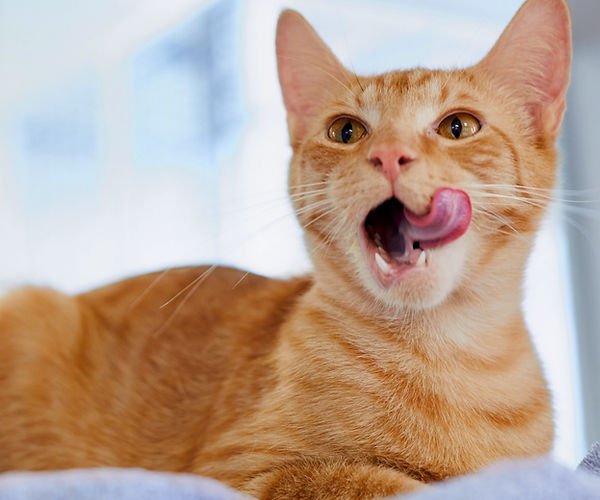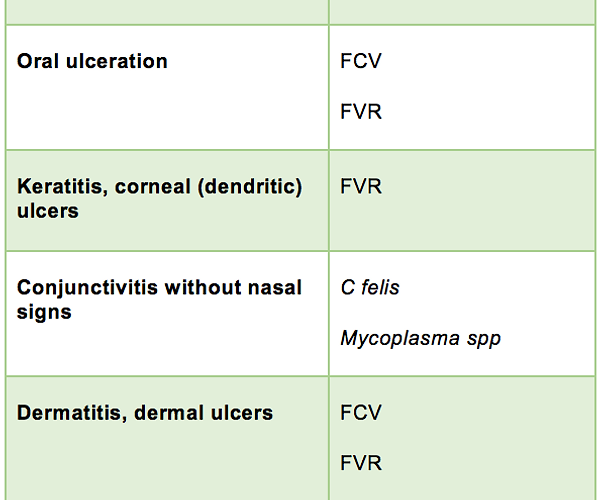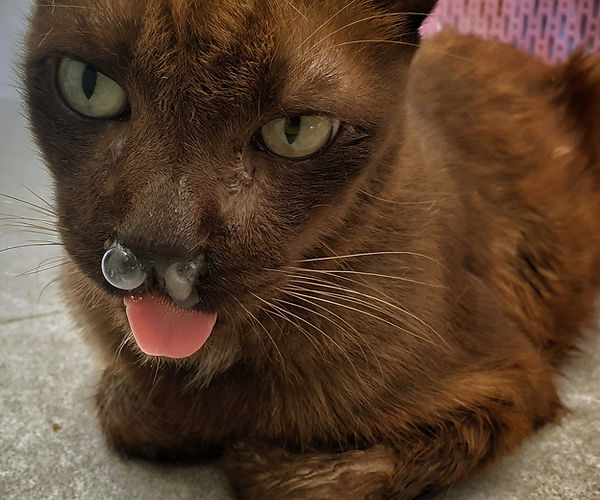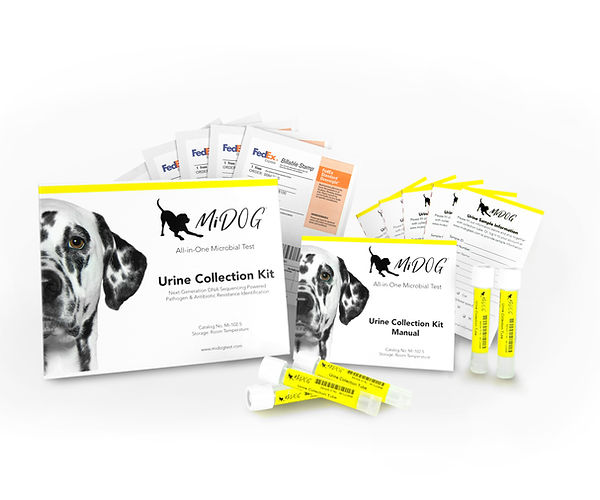
If your cat is coughing up more than hairballs, your furry friend may have feline respiratory disease complex! Feline respiratory disease complex (FRDC) is an umbrella term for respiratory illnesses in cats caused by a group of organisms and/or viruses, and is estimated to occur in approximately 25.8% of cats in high-risk group settings [1]. FRDC, also known as feline upper respiratory infection (URI), can be complicated to treat due to possible secondary bacterial infections on top of the initial viral and/or bacterial infections. Therefore, a combination of understanding the conditions that cause the infection and the infective pathogens themselves is critical in delivering quality healthcare to your cat.
Feline upper respiratory infections (URIs) are uncomfortable at best for your furry friend, and if left untreated may result in serious health complications. Fortunately, the prognosis for these infections is generally good, although kittens are more at risk for complications and suffer higher mortality rates [1]. If you suspect your cat has a URI, it is recommended that you make an appointment with your veterinarian to diagnose and provide a treatment plan tailored to your cat’s infection.
What is Feline Respiratory Disease Complex?
Feline respiratory disease complex refers to the characteristic acute presentation of contagious respiratory or ocular disease caused by one or multiple pathogens [2]. FRDC is typified by principle diseases including feline rhinotracheitis virus (FVR), feline calicivirus (FCV), Chlamydophila felis, Bordetella bronchiseptica, and Mycoplasma felis [3].
URIs are pathogen load-dependent and transmitted via aerosol droplets and fomites, which makes cats being boarded in close proximity to other cats particularly at risk for developing a URI [4]. Pathogen shedding and consequent transmission vary based on the subtype of the FRDC, with cats suffering from calicivirus shedding the virus continually and cats suffering from feline rhinotracheitis virus shedding intermittently [4]. The incubation period for feline respiratory disease complex also varies based on subtype: 2-6 days for FVR and FCV, and 5-10 days for bacterial infections [3].
For any cat parent, identifying symptoms of feline respiratory disease complex is critical. Symptoms vary greatly dependent on the infectious pathogen, but may include:
- Increased serous, mucoid, or mucopurulent nasal discharge
- Conjunctivitis and ocular discharge
- Sneezing
- Coughing
- Ulceration of the lips, tongue, gums, or nasal planum
- Salivation
- Fever
- Lethargy
- Loss of appetite
Although the presentation of FRDC is most often acute, chronic presentations of these infections are possible due to the infection itself or even immune-mediated responses to the infection [1]. Environmental factors such as such or continued exposure to both symptomatic and asymptomatic cats can also contribute to chronic FRDC [5]. Presentation of the disease can also help inform the veterinarian of the possible pathogen causing your cat’s URI, and so making sure to be observant and take note of the symptoms your cat is suffering is important. Below is a chart of clinical clues that can help indicate what pathogen is infecting your cat.
Table 1. Clinical clues to potential pathogen (adapted from Cohn, 2011).


The image above depicts nasal discharge in a cat suffering from a feline upper respiratory infection.
Treating and Diagnosing Feline Respiratory Disease Complex
The prognosis for cats suffering from FRDC is generally positive. Treatment for viral FRDC focuses more on alleviating symptoms, while treatment for bacterial FRDC employs targeted antibiotics [3]. Broad-spectrum antibiotics are often used in cases of secondary bacterial infections [3]. With the rise of antibiotic-resistant strains of pathogens, advances in recent clinical diagnostics have allowed for more targeted and efficient interventions. Historically, culture-based methods have been used to assess the nasal microbiome of cats, but there are notable diagnostic shortcomings. A review on respiratory and thoracic medicine in cats notes how “bacterial culture and antimicrobial susceptibility testing on nasal discharges are not generally recommended because results are difficult to interpret in that they typically yield normal intranasal flora” [5]. The review goes on to support the usage of molecular diagnostics for feline respiratory disorders [5]. Serology tests alone have been found to have a false-negative rate of 15% in clinically impacted cats, further supporting the shifting emphasis of integrating metagenomics sequencing into the clinical diagnostics of FRDC [6].
Next-Gen Sequencing (NGS) has increasingly helped researchers and veterinarians characterize feline upper respiratory infections [7]. A recent study aiming to identify Mycoplasma spp. in the feline upper respiratory tract using metagenomics sequencing found 15 unique Mycoplasma spp. in disease state cats [6]. Twelve of these species were previously unreported in cats, indicating the clinical applicability of using genomic sequencing to identify, analyze, and eventually treat cats more effectively.
Despite its name, the MiDOG All-in-One Microbial Test offers comprehensive diagnostic information for cats suffering from feline respiratory disease complex. Utilizing NGS technology to detect and quantify all microbial DNA through untargeted and comprehensive sequencing and quantitative comparisons to reference databases, the MiDOG NGS technology provides a useful opportunity to shed light on the microbial makeup of your cat’s infection for clinical application. The MiDOG microbiome test is a microbial identification test grounded on scientific research that provides veterinarians DNA evidence for the guided treatment of cat infections, such as feline respiratory disease complex.

Find out if your vet uses MiDOG before you book your next appointment!
References
[1] Aziz, M., Janeczko, S., & Gupta, M. (2018). Infectious Disease Prevalence and Factors Associated with Upper Respiratory Infection in Cats Following Relocation. Animals: an open access journal from MDPI, 8(6), 91. https://doi.org/10.3390/ani8060091
[2] Cohn, L. (2011). Feline Respiratory Disease Complex. Veterinary Clinics Of North America: Small Animal Practice, 41(6), 1273-1289. doi: 10.1016/j.cvsm.2011.07.006
[3] Kuehn, N. (2013). Feline Respiratory Disease Complex – Respiratory System – Veterinary Manual. Retrieved 15 June 2021, from https://www.merckvetmanual.com/respiratory-system/respiratory-diseases-of-small-animals/feline-respiratory-disease-complex
[4] Kuehn, N. (2018). Feline Respiratory Disease Complex (Feline Viral Rhinotracheitis, Feline Calicivirus) – Cat Owners – Veterinary Manual. Retrieved 15 June 2021, from https://www.merckvetmanual.com/cat-owners/lung-and-airway-disorders-of-cats/feline-respiratory-disease-complex-feline-viral-rhinotracheitis,-feline-calicivirus
[5] (2012). Respiratory and Thoracic Medicine. The Cat, 846–913. https://doi.org/10.1016/B978-1-4377-0660-4.00030-2
[6] Donnett, Uri, “Feline Upper Respiratory Disease Complex: The detection and epidemiology of respiratory pathogens in Midwestern feline shelter populations” (2014). Graduate Theses and Dissertations. 13814. https://lib.dr.iastate.edu/etd/13814
[7] Berger, A., Willi, B., Meli, M., Boretti, F., Hartnack, S., & Dreyfus, A. et al. (2015). Feline calicivirus and other respiratory pathogens in cats with Feline calicivirus-related symptoms and in clinically healthy cats in Switzerland. BMC Veterinary Research, 11(1). doi: 10.1186/s12917-015-0595-2
